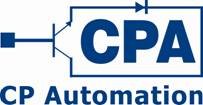We have a new range of harmonic filters available, including the Revcon RHF-A and
RHF-B. These filters are used to reduce the harmonic distortion caused by variable
speed drives (VSD). To make sure the performance claims of these filters are valid,
CP Automation analysed both filter models in a series of tests.
VSDs make
harmonic noise. This noise goes back to the transformer and affects the signal
generated. This in turn distorts the voltage, leading to overheating of the
entire system. Harmonic filters reduce this noise in the first instance,
prolonging the life of all equipment.
CP Automation's
new range of Revcon passive harmonic filters are easy to retrofit into existing
applications, with no need for routine maintenance. Revcon states that the
RHF-A and RHF-B reduce harmonic current distortion to 10 per cent and 5 per
cent respectively. However, these figures have been cross referenced as part of
a test with a standard 6-pulse VSD and DC choke.
Without a
harmonic filter, findings showed the drive created a harmonic distortion of 36
per cent. Positively, the RHF-A reduced this harmonic distortion to 6.2 per
cent at nominal operation. Similarly, the
RHF-B reduced the harmonic distortion to 2.5 per cent. Both performance values
demonstrated far better results that the official stated values from Revcon.
"It is
important that we test such equipment against official data," explain John
Mitchell, global business development manager at CP Automation. "It increases
our customers' confidence in the products we supply, and ensures we see the
true potential of products that often come with somewhat conservative
claims."
To
request your own copy of the report, e-mail john.mitchell@cpaltd.net. Equally if
you are looking to install a passive harmonic filter to prolong the life of
your system, CP Automation is available to supply and install this filter on
location. For more information about CP Automation's catalogue of passive
harmonic filters, visit www.cpaltd.net of
call +44 (0) 1724 851515.













